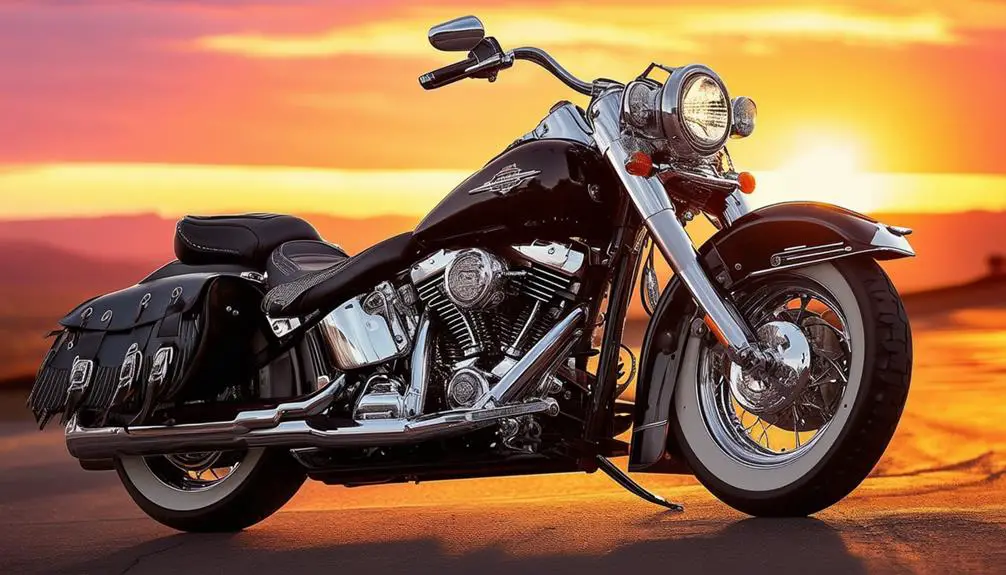Are you experiencing throttle by wire problems with your Harley Davidson? If so, you’re not alone. Many Harley riders have reported issues with their TBW system, which can cause a variety of problems, including unresponsive acceleration, lag, and even engine failure.
One of the most common causes of TBW problems in Harley Davidson motorcycles is a malfunctioning throttle position sensor (TPS) . This component is responsible for telling the engine control module (ECM) how much throttle is being applied, and if it fails, your bike may experience a range of issues, from hesitation and stalling to surging and poor fuel economy.
Fortunately, there are steps you can take to diagnose and fix TBW problems in your Harley. Whether you need to replace a faulty TPS or clean your throttle body, our guide can help you get your bike running smoothly again. With a little know-how and some elbow grease, you can get back on the road and enjoy your ride to the fullest. So keeping reading and let’s get to it!
Understanding Throttle By Wire Systems
Throttle by wire is a technology that has become increasingly common in modern motorcycles. This system replaces the traditional mechanical linkage between the throttle and the engine with an electronic connection. The electronic throttle control system (ETC) is made up of several components that work together to provide a smooth and responsive riding experience.
Electronic Throttle Control Basics
The electronic throttle control system (ETC) is a type of throttle by wire system that uses sensors and electronic control units (ECUs) to manage the throttle. The system uses a twist grip sensor to detect the position of the throttle, and a throttle control actuator to adjust the throttle opening. The ECU communicates with these components to ensure that the throttle responds accurately to the rider’s inputs.
Advantages of Throttle By Wire
Throttle by wire systems provide several advantages over traditional mechanical systems. One of the main benefits is that the system can be programmed to provide a more precise and consistent response. This can improve fuel efficiency, reduce emissions, and provide a smoother and more predictable riding experience.
Another advantage of throttle by wire is that it allows for more advanced features, such as traction control and ride-by-wire. These features use sensors and software to adjust the engine’s performance based on the rider’s inputs and the road conditions.
Components of the Throttle By Wire System
The throttle by wire system consists of several components, including the throttle position sensor (TPS), potentiometer, wiring harnesses, and the throttle body. The TPS is responsible for detecting the position of the throttle, while the potentiometer adjusts the throttle opening. The wiring harnesses connect the components together, while the throttle body controls the flow of air and fuel to the engine.
In summary, throttle by wire systems provide several advantages over traditional mechanical systems. They use sensors and electronic control units to provide a more precise and consistent response, which can improve fuel efficiency and reduce emissions. The system is made up of several components, including the throttle position sensor, potentiometer, wiring harnesses, and throttle body. By understanding these components, you can better diagnose and troubleshoot throttle by wire problems.
Common Throttle By Wire Issues
If you are experiencing throttle by wire problems on your Harley Davidson motorcycle, there are several common issues that you may encounter. Here are some of the most common throttle by wire issues and how to diagnose and troubleshoot them.
Stuck Throttle and Limp Mode
One of the most common throttle by wire issues is a stuck throttle or limp mode. This occurs when the motorcycle’s computer detects a problem with the throttle system and reduces power to prevent damage to the engine. If you experience a stuck throttle or limp mode, the first thing you should do is check for error codes.
Error Codes and Diagnostic Trouble
Error codes can provide valuable information about the cause of throttle by wire problems. If you see an error code on your motorcycle’s dashboard, it is important to diagnose and troubleshoot the problem as soon as possible. Some of the most common error codes associated with throttle by wire problems include P1511, which indicates a problem with the throttle actuator control module, and P2101, which indicates a problem with the throttle position sensor.
Throttle Position Sensor Failures
Throttle position sensor failures are another common issue with throttle by wire systems. Symptoms of a faulty throttle position sensor include low throttle response, stalling, and surging at certain throttle points. If you suspect a problem with your motorcycle’s throttle position sensor, it is important to have it inspected and repaired as soon as possible to avoid further damage to the engine.
Electrical and Wiring Problems
Electrical and wiring problems can also cause throttle by wire issues. If you experience problems with your motorcycle’s throttle, it is important to check the wiring and electrical connections to ensure that they are secure and functioning properly. Faulty wiring can cause error codes, check engine lights, and other problems with the throttle by wire system.
In conclusion, throttle by wire problems can be frustrating and potentially dangerous. By understanding the common issues associated with throttle by wire systems and how to diagnose and troubleshoot them, you can keep your Harley Davidson motorcycle running smoothly and safely.
content continues below
Quick Navigation for Related Problems
-
Harley Davidson Oil Leaks: Quick Fixes for a Sealed Ride
-
Harley Davidson Excessive Vibration: Tips to Smooth It Out
-
Harley Engine Knocking Sound: Causes and Fixes
-
4 Most Annoying Harley Davidson Throttle by Wire Problems
-
5 Harley Davidson Overheating Problems That Ruin Your Ride
-
3 Harley Davidson Brake Light Switch Problems To Be Aware Of
-
Total Harley Davidson Starter Problems Troubleshooting Guide
-
Harley Davidson Speedometer Not Working: Tips, Tricks & More
-
Harley Oil Breather Problems: Quick Tips, Tricks & More
-
Harley Oil Sumping Fix: Quick Solutions for a Smooth Ride
-
Harley Davidson ABS Light Flashing: Tips, Fixes, and More
-
Harley Davidson BCM Problems: Navigating Common Issues
-
Is Your Harley Clicking When Trying to Start? Help’s Here!
-
Harley Davidson Fuel Pump Problems: Tips, Tricks & More
-
3 Harley Davidson Fuel Injection Problems To Be Wary Of
-
Harley Bad Compensator Symptoms: Recognizing Early Signs
-
6 Reasons Why Your Harley Has Power but Won’t Start
-
Your Harley Lost All Electrical Power? Here’s What To Do
-
3 Harley Davidson Transmission Problems That Shift Your Mood
-
4 Harley Hydraulic Clutch Problems, Their Causes and Fixes
content resumes
Maintenance and Repair Recommendations
If you want to keep your Harley Davidson running smoothly, regular maintenance practices are a must. This includes checking your throttle cables for any signs of wear or damage, as well as inspecting your gaskets and oil seals for any leaks. It’s also important to keep an eye out for any damage or corrosion on your bike’s components, as this can lead to more serious issues down the road.
In addition to regular maintenance, it’s important to know how to troubleshoot any issues that may arise with your throttle by wire system. One way to diagnose problems is to use a multimeter to measure the voltage output of the throttle position sensor (TPS). To do this, turn the ignition switch to on, connect the voltmeter across pin 30 (+) and pin 16 (grnd), and gradually open the throttle. The voltage should increase steadily with no spikes or low voltages.
If you’re not comfortable diagnosing or repairing your throttle by wire system on your own, it’s always a good idea to seek the assistance of a professional mechanic. They can help you identify and fix any issues with your system, as well as provide regular maintenance to keep your bike running smoothly.
Regular Maintenance Practices
To keep your Harley Davidson running smoothly, it’s important to perform regular maintenance practices. This includes checking your throttle cables for any signs of wear or damage, as well as inspecting your gaskets and oil seals for any leaks. It’s also important to keep an eye out for any damage or corrosion on your bike’s components, as this can lead to more serious issues down the road.
Troubleshooting Steps
If you’re experiencing issues with your throttle by wire system, there are a few troubleshooting steps you can take. One way to diagnose problems is to use a multimeter to measure the voltage output of the throttle position sensor (TPS). To do this, turn the ignition switch to on, connect the voltmeter across pin 30 (+) and pin 16 (grnd), and gradually open the throttle. The voltage should increase steadily with no spikes or low voltages.
Frequently Asked Questions
What are the common symptoms of throttle by wire issues on a Harley Davidson?
Throttle by wire issues can manifest in several ways. The most common symptom is a lag in throttle response or unresponsive acceleration. You may also experience a rough idle or stalling, difficulty starting the engine, or the engine light may come on.
How can I troubleshoot throttle response problems on my Harley?
If you’re experiencing throttle response problems, the first step is to check the throttle cables and ensure they’re properly adjusted. You can also try cleaning the throttle body and inspecting the throttle position sensor. If these steps don’t resolve the issue, it’s best to take your Harley to a professional mechanic for further diagnosis.
What steps should I take if my Harley’s throttle is sticking?
If your Harley’s throttle is sticking, you should stop riding immediately and inspect the throttle cables for damage or wear. You can also check the throttle body for debris or damage. If you’re unable to resolve the issue, take your Harley to a mechanic for professional repairs.
How do I diagnose a faulty throttle position sensor on a Harley Davidson?
To diagnose a faulty throttle position sensor, you can use a multimeter to measure the voltage output of the sensor. Turn the ignition switch to on, connect the voltmeter across pin 30 (+) and pin 16 (grnd), and gradually open the throttle. The voltage should increase steadily with no spikes or low voltages. If the voltage output is erratic or inconsistent, the throttle position sensor may be faulty.
What maintenance tips can prevent throttle by wire problems on a Harley?
Regular maintenance is key to preventing throttle by wire problems on your Harley. Keep the throttle body clean and inspect the throttle cables for wear or damage. You should also replace the throttle position sensor every 50,000 miles or as recommended by the manufacturer.
Can a Harley’s throttle by wire system be repaired?
The answer depends on the specific issue and the severity of the damage. In some cases, minor issues can be repaired, such as replacing a faulty throttle position sensor or cleaning the throttle body. However, more severe issues may require the replacement of the entire throttle by wire system. It’s best to consult with a professional mechanic for guidance on repairs or replacements.







Leave a Reply
You must be logged in to post a comment.